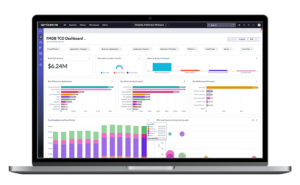
Cloud computing continues to make big promises of reduced costs, increased flexibility, and greater scalability (to name a few). But for the majority of organizations, there’s a pitfall that makes those promises lose their luster: unexpected costs.
Forrester Research confirmed in 2017:
“…less than 40% of firms meet or exceed goals related to both migration and run costs… 58% of respondents claim the costs to run their infrastructure in the cloud were higher than estimated… when asked what they would do differently in their next migration, the most common responses were to invest in tools, increase performance visibility, increase education of costs, risks and benefits, and spend more time on application assessment.”
There are five common types of unexpected cloud costs that can arise during and after migration. By being aware of these before you begin your cloud migration, you can prepare for them and mitigate their impact. Let’s take a look at each…
Internal Labor & Consultants
The migration process itself is highly labor intensive, more than most organizations assume. In fact, Forrester reports that up to 50% of migration costs can be attributed directly to labor – resulting in a host of surprise costs.
But an unexpected pull on internal labor isn’t the only issue here.
In many cases, internal labor simply can’t supply the manpower or expertise to complete a smooth cloud migration and outside expertise is needed. Unfortunately, this problem isn’t always obvious until migration is well underway, at which point organizations must choose between dealing with a stalled migration or incurring unplanned costs by hiring contractors and consultants on short notice.
The only way to avoid this problem is to be as realistic as possible about whether or not external support will be needed – often true for less mature organizations navigating cloud-specific tasks like workload mapping, application modernization, or data migration for the first time – then account for those costs accordingly.
Data Transitioning
Re-hosting applications in the cloud is just one piece of the migration process; the data those applications rely on must be moved as well. And depending on the volume of data, this can quickly turn into a costly ordeal.
First, organizations must consider cloud provider fees for importing data. Every provider is different, but they all charge some kind of network fee to move data into their infrastructure. Although your applications may only access a fraction of your data on a regular monthly basis, your initial import may be many times larger. And transferring data from physical media incurs additional costs on top of network costs.
The second factor, again, comes back to labor. In most cases, organizations are working with large data sets that must remain available at all times. As a result, there needs to be a clear strategy for managing the switch while also avoiding downtime, and organizations need to have a firm grasp on the resources required to execute that strategy.
While these costs are not avoidable, they can be anticipated and planned for. Be sure that any cloud migration estimates include data import costs, understand whether you’ll need to leverage physical transfer (these requirements may be different for different systems), and engage experts early to prepare a clear no-downtime strategy.
Application Refactoring & Integration
Although some applications can be migrated through a simple “lift-and-shift” effort (re-hosting the app with no code changes), the existing architecture of many others may result in suboptimal performance when deployed in the cloud. Without refactoring, they will not take advantage of what the cloud offers, leaving considerable savings on the table.
Before any application is considered for migration, thoroughly evaluate its architecture to determine if changes are needed before it can run efficiently in the cloud – then estimate and plan for those costs as accurately as possible.
Furthermore, organizations should keep integration costs in mind as well. For a variety of reasons, it might make sense to leave some applications running on-prem; but the gap between those applications and others deployed in the cloud must be managed to avoid duplication and error, and even additional data transfer expenses.
Vendor Lock-in
The competitive nature of the cloud computing market is a huge upside for consumers. Cloud providers are always looking for ways to entice consumers by lowering prices and adding capabilities.
But unfortunately, it’s not always easy to switch between providers when a better opportunity arises (or worse, when there’s a problem). Even if an organization is free to shop the market from a contractual perspective, the cost and effort of moving to another provider can be prohibitive.
Monitoring & Optimizing
The increased agility of cloud computing is a double-edged sword. True, it allows organizations to make changes faster. But not all changes end up being positive.
Adding too many third-party management services can introduce redundancy without sufficient due diligence of what each service provides; exciting new offerings might seem to make sense today but are proven unnecessary tomorrow; and misinterpretation of complex pricing structures can lead to wasteful provisioning decisions.
Even when organizations don’t actively introduce change, opportunities to optimize can still go unnoticed, especially as conditions shift over time.
As a result, cloud environments tend to require more oversight to prevent mistakes and ensure proper utilization. And that additional oversight takes both time and money to deliver.
Should “Hidden Costs” Scare You Away from Cloud?
The short answer is no. The “hidden costs” like those discussed here are only a risk if they stay hidden. If they’re understood from the outset, these costs represent a minimal threat to a successful migration.
And remember, if an organization’s overall cloud strategy is solid, migration costs are ultimately just a bump in the road to long-term cost savings and increased efficiency. The key to success is simply knowing how big that bump will be to ensure a smooth transition.





